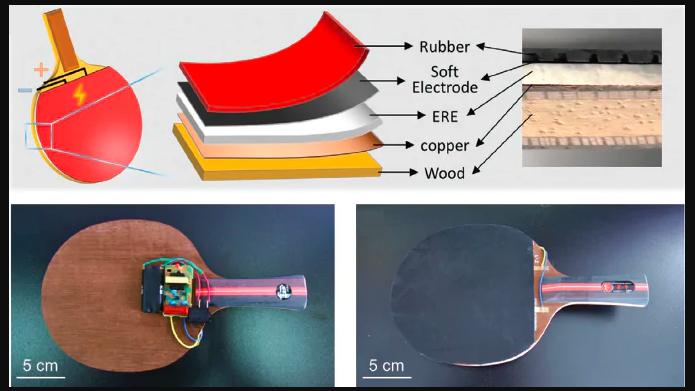"Why don't they go back to wood rackets? Then we would see the best tennis to be played," opined opinionated tennis legend John McEnroe. "I'm a dinosaur, but I think that you see these great players have even more variety and you see more strategy. There's be more subtlety." Similar sentiments have always been expressed in table tennis at the advent of any game-changing technology. The legendary Marty Reisman was one of the world's best players in the hardbat era, but saw his "witty game" abandoned as players from the 1950s forward flocked to the new sponge-covered rackets. Reisman, every bit as opinionated as McEnroe, dismissed the lightning-quick modern offense-oriented game as "totally boring." One can only imagine, then, how these unfiltered New Yorkers would respond to the latest technological development in racket sports. Chinese researchers Mengying Zhang and Jinbo Wu, et al., have recently published a research paper entitled, "Smart Table Tennis Racket with Tunable Stiffness for Diverse Play Styles and Unconventional Technique Training." The paper describes how the researchers applied a layer of anisotropic electrorheological elastomers (EREs) to a racket. When activated by a battery, the ERE produced measurable effects in ejection angle (-11%) and velocity (+2%). The researchers cite this variability as a an asset to training, such as with the new generation of AI-driven table tennis practice robots. The potential for use by humans, however, is far more intriguing. While the current design (pictured) is obviously not tournament-legal, version 2.0 might not even be noticeable during pre-match racket inspection. ITTF regulations require a blade be made of 85% wood; they do not, however, specifically forbid electronic materials in the 15% reserved for experimentation. The "smart racket" could toggle from soft touch around the net when turned off to devastating full-speed attacks when activated. In an otherwise even match, such variability would certainly lend the user a tremendous advantage. If approved, many would certainly rush to take the lead in the never-ending arms race of sporting technology. While such innovations can arguably make the game more exciting, and therefore more likely to attract a new generation of players, you can already imagine the reaction from the old guard: "You canNOT be serious."
More at Advanced Science News
